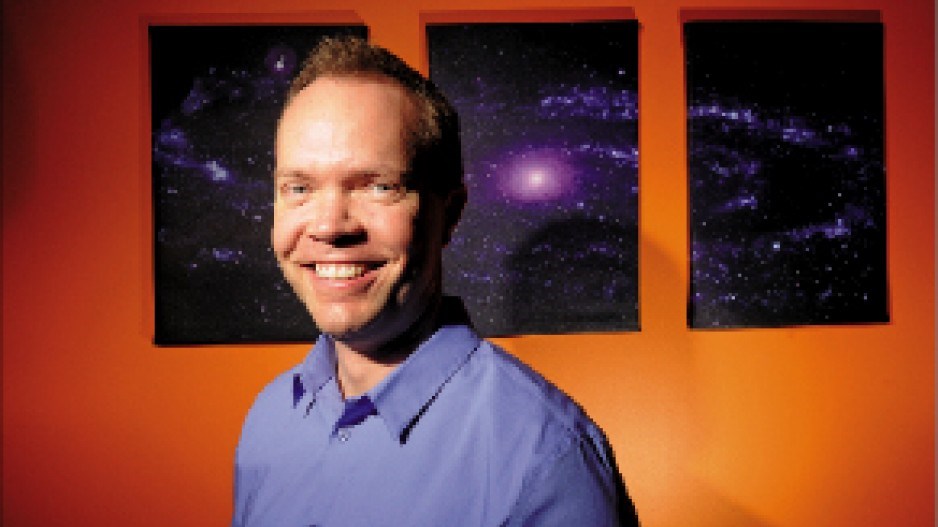Vancouver’s UrtheCast has taken a giant step into the thermosphere with its goal to affix high-resolution cameras to the International Space Station by the end of 2012.
The cameras will send still images and video to Earth-giving users access crucial information for anything from disaster monitoring to commodities trading.
Company founder Scott Larson said the cameras are in production and should be complete this summer.
Last month, UrtheCast signed a $4.2 million contract with MacDonald, Dettwiler and Associates Ltd. (TSX:MDA), which Larson said will build some of the space hardware and data compression units for the project.
Larson founded UrtheCast, an Earth Video Camera Inc. subsidiary, in 2010, after an acquaintance contacted him regarding a potential project with the Russian Federal Space Agency, which was interested in streaming images of Earth for global monitoring.
With a background in finance and technology, Larson began a steep learning curve to understand the technology and to find investors.
For the camera production, Larson connected with Rutherford Appleton Labs in the U.K., which has been working on the cameras for the past seven months.
Larson is also working with Calgary incubator Podium Ventures to find investors. They’ll be going through two rounds of institutional financing looking for a total of $15 million.
At the start of the project, Larson faced two extremes in people’s reactions.
“People either said, ‘That’s unbelievable,’ and they jumped on board all in or they said, ‘That’s stupid.’”
The high-res cameras would offer a 5.5-metre resolution, Larson explained. “Anything that’s five metres large, you’ll see. You can see a roof, but not the shingles on the roof.”
He added that applications for this kind of material are endless.
“Oil companies could get images that would show leaks in pipelines. If Ford Motor Co. found it useful, they could count the number of cars in a Walmart parking lot.”
Larson is quickly gaining international attention.
UrtheCast has already won an award in the cloud-computing category of a competition sponsored by the European Space Agency.
It’s now garnering attention globally from environmental and security-related global monitoring organizations, as well as those interested in minute-to-minute agriculture information.
Larson said Brazil’s government is interested in using the technology for crop monitoring.
“Based on algorithms and history, they can find out, ‘Do we import or export?’
“If I’m a commodity trader sitting in my office in New York, I can just look at images and monitor [crops] on a weekly basis.”
The technical aspect of getting the data to Earth has been resolved, according to Larson. UrtheCast now faces the issue of how to get the data from the ground stations to the cloud, how to process it and how to stream it to the Internet.
“Storage costs are cheap but bandwidth cost is expensive,” he said. “We’re dealing with three terabytes per day.”
That amount of data transfer could run to tens of thousands of dollars a day.
For help with ground architecture, Larson has connected with Victoria company MindHeap, a specialist in data movement that has worked with the likes of AbeBooks and Boeing.
“We’ve looked at everything that is going to come into this system and every possible use over the next couple of years to establish a sort of culture for the data life – what the data has to go through and how it has to perform,” said MindHeap chief technology officer Jayson Minard. “We model out the system growth, access patterns and retention policies and in what volume.”
Minard said that eventually, the data becomes so big, it gets too large to move.
“On a per-daily basis it’s not that big,” said Minard. “We’ve seen transmission at this size or above. The difference with them is that it doesn’t stop.”
He added that dealing with terabytes or hundreds of terabytes of data is not that unimaginable.
“It’s when we get up to petabytes [one million gigabytes], it starts to change, especially when you’re doing hosted storage models and cloud computing, no one really knows where that top end is.”
(In August 2011, IBM claimed to have created the largest storage unit – a 120-petabyte data capacity comprised of 200,000 conventional hard drives.)
Minard figures he and Larson have a workable solution that would give them a couple of years of headroom.
As they move forward, they’ll look for a solution that offers a better cost model or a more appealing storage option.
“In a year or two there will be new options and you just have to roll with it,” said Minard.
For Larson, the UrtheCast project is more than just data transfer and storage solutions.
“It’s part of the commercialization of space, but it’s part of a broader platform to allow people to interact with one another,” he said.
“Other companies haven’t been able to bridge the gap.” •




